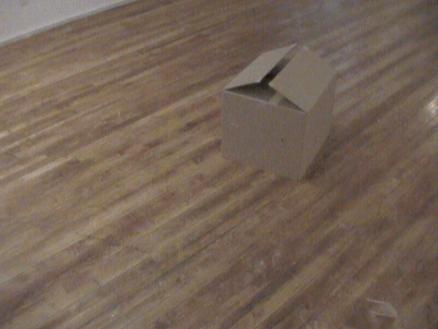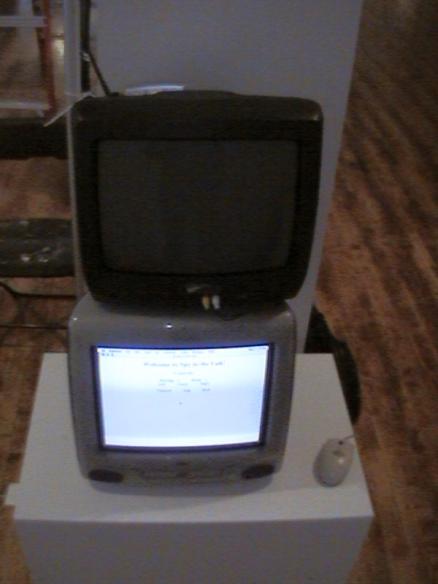Bootcamp Portfolio
Sydewynder
Sydewynder is an open-source SMS receiver and sender application written in Python for the Nokia S60 phones. It can automate the responses of messages and can be used as a mobile application server in areas where setting up a traditional server may be difficult or illegal. It also is very useful for prototyping mobile applications, such as games, without the burden of expensive hosting. As such, it works very well in educational settings. It even includes an emulator for developing scripts off of the phones.
 The Sydewynder Logo
The Sydewynder Logo
Sydewynder requires the latest version of Python for the S60 (>= 1.4.0). If you are using earlier version of PyS60, please update your phone with the latest software.
To install Sydewynder, copy the contents inside the "sydewynder-x.x" directory into the E:\Python\ directory on your S60 phone (this should be the memory card). Sydewynder comes with "Pig Latin", "Ask Tom Cruise", and "We Feel Fine" as example scripts, as well as arcade.py, which will run all of them from a single server instance. Feel free to look at how the files are constructed and modify them for your own purposes. Pay special attention to the comments, as they will make developing new apps for Sydewynder much easier.
Scripts developed off-phone can be run like any other Python script if the syde_emu.py module is in the same directory. When you run your script from the command line, a crude emulator will appear and guide you through a typical interaction between cell phone users and the Sydewynder app you have created.
This project was featured on the front page of the CDT department website.
It was also part of Paul Notzold's Ask Tom piece, which was on display at the Chelsea Art Museum for the Parsons 10 Years Running show. Participants were asked to text a question to a number and received back a random (or is it?!) quote from a famous celebrity whose name rhymes with Bomb Booze. The phone "server" running Sydewynder stayed up for about two weeks straight without much of a problem.
If you're using Sydewynder, be sure to drop a comment on the Sourceforge forum and let us know what you've done with it. And be sure to post there if you need help or run into any bugs.
Sydewynder is copyright 2007 Mike Edwards and is licensed to you under the GPL version 2.0. "Ask Tom" was developed with Paul Notzold. "We Feel Fine" uses the amazing wefeelfine.org API to work its magic.
Bootcamp Final: Fatto! Fatto!
For my final project in Parsons D&T bootcamp, I created a site called fattofatto.org that was designed to promote the sport of bocce in New York City. I have a real love for the game, so this was a fun project, especially making mini-documentaries by interviewing other players and building a game based bocce's basic skills. Fatto!
- Comments



- 5094 reads
Stiffi Photon Bombs The Po Po
Some raw videos of the Mein Stiffi group photon bombing the police car from their secret perch high above the city. Just trying to spread a little love, that's all!
- Mike's blog
- Comments
- Read more



- 3883 reads
Arduino Coding Session
Today, we will run through the basics of Arduino programming. To follow along, please go to the reference section of the Arduino site and step through the functions as we go.
Also, download the files below. They are the Arduino code examples we'll follow once we start making real circuits.
- Comments



- 23848 reads
Design Challenge #1: Playful Literacy
Challenge
How do you make learning a language/literacy skill playful?
Problem
- Topic
- Teaching designers fundamental multimedia programming skills
- Audience
- Professional designers and design students, as well as educators and psychologists who are creating applications and interfaces.
- Setting
- Higher-education institutions/design schools, professional associations, workplaces/on-the-job training.
- Problem
- How do we create an approachable learning context for groups of designers with varying experience levels in computer programming so that students will achieve a sufficient enough level of self-efficacy that they will feel able to pursue code-related projects in their own multimedia/interactive work?
Game Prototyping
Welcome to the Game Prototyping Workshop!
Making a game can be easier than you think. With a few simple concepts, you can start to piece together a prototype, in any language, that can help you test your mechanics, sketch out an interface, or examine different possibilities for artwork. In this workshop, we'll use Python to:
- Build the "main loop"
- Get input from the user
- Process the rules of the game
- Display the result on screen as graphics
all by making a simple version of Space Invaders! In one short evening!
Let's get started!
Spy in the Lab
During the winter break of 2006-2007, Chris Hennelly and I spent a bunch of free time working on the Spy in the Lab project. The Spy was supposed to go to our friends at Tsinghua University and peek in on all the stuff they were doing. It didn't quite make it for that semester, but we got it working pretty close to 100% by the time we were done with break.
It was sitting in the 10 Years Running Show at the Chelsea Art Museum.

Metal-Head Goat Skull

This is the goat skull that was part of the physical computing final project. Inside its sinuses is a halogen bulb hooked up to a relay. He really lit up the room!
- Comments



- 10818 reads
Game Salon Presentation Audio
Here's the audio of my presentation of our Inspector Carbone game, generously recorded by Becky Heritage. I spoke before the salon, which organized by the good folks at games for change. There was quite a crowd there, which made me a little nervous, but they had really interesting questions and comments about the project. All in all, it was an extremely valuable experience.
- 4146 reads
Casual Games
In this class, we'll be putting together a game from the brainstorming phase right up into a good prototype.
- Comments



- 7224 reads
tags
Copyright Mike Edwards 2006-2009. All content available under the Creative Commons Attribution ShareAlike license, unless otherwise noted.

